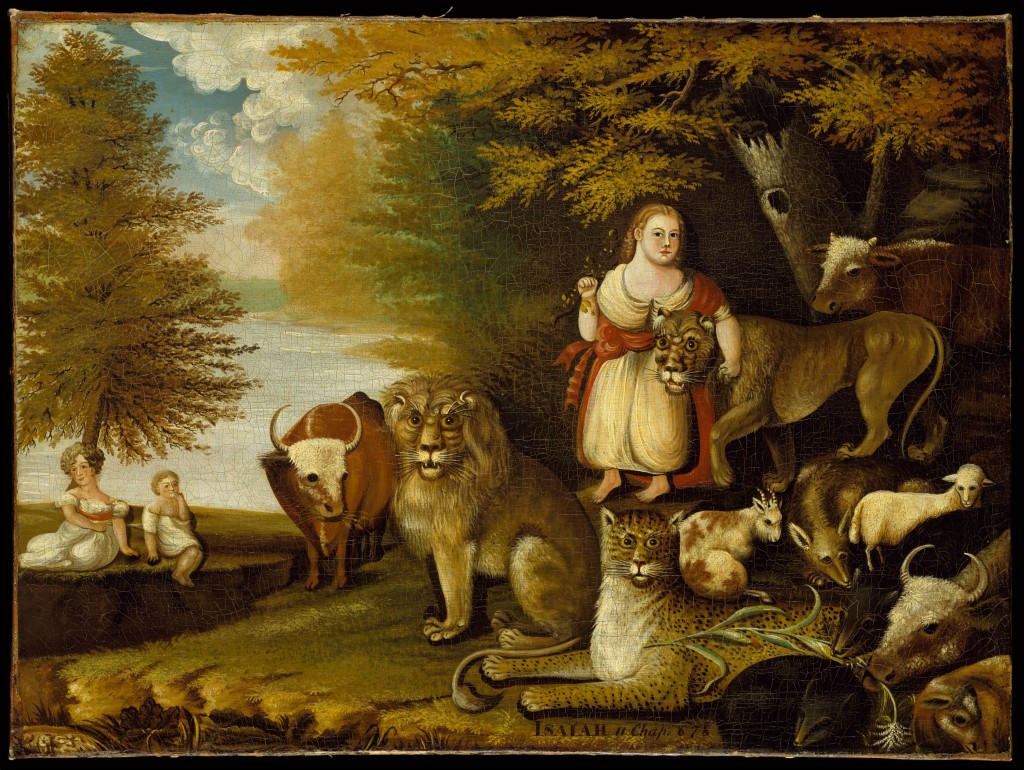
Edward Hicks (1780-1849) was a Quaker minister who supported his family by painting commercial signs in the Philadelphia area. He is one of the best known folk artists in the world, most notably for his 62 versions of Peaceable Kingdom paintings. A short biography of Hicks can be found here. Edward Hicks visited Goose Creek Meeting (in the northern Virginia village known as Lincoln) during the winter of 1837. He made the challenging winter journey alone and by buggy, over cold, muddy roads from his home in Bucks County, Pennsylvania. While in Lincoln, Hicks stayed at the home of Samuel and Elizabeth Janney.
By the time of his visit to Lincoln, Edward Hicks had already begun painting his famous series of Peaceable Kingdom canvases, depicting animals who are normally predator and prey, quietly sitting or standing side by side. Edward Hicks’ nephew, Thomas Hicks, painted a portrait of his uncle in his studio, at work on a Peaceable Kingdom canvas.
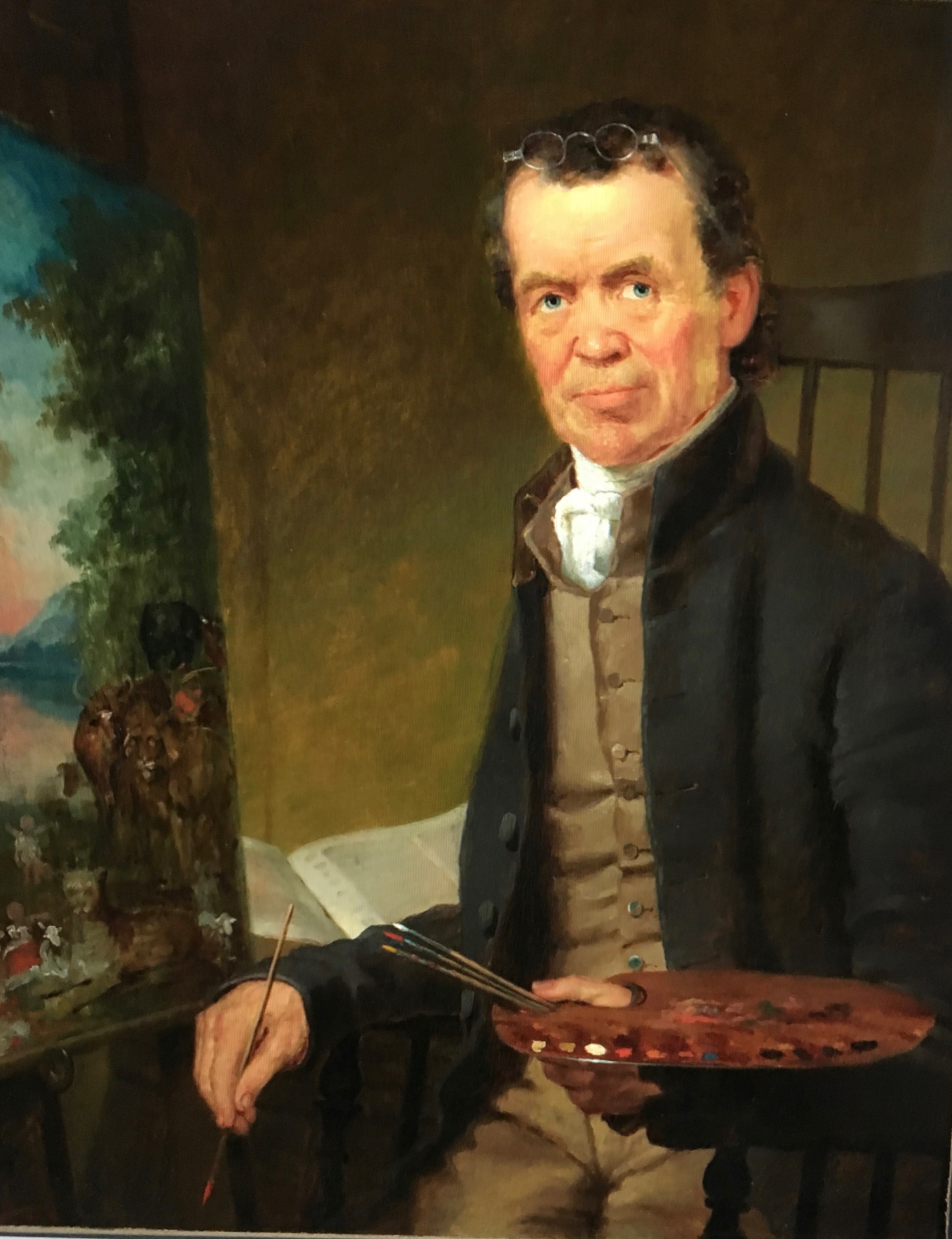
Summaries of Edward Hicks’ biography, religious beliefs and art history can be found on the Wikipedia link above, or on the Folk Art Society of America and the Metropolitan Museum of Art websites, among many other places. Newtown Meeting in Bucks County, Pennsylvania was Edward Hicks’ home Meeting; its website has some biographical history about Hicks. He is buried in the Newtown Meeting burial ground. Near the end of his life, Edward Hicks wrote a book, Memoirs of the life and religious labors of Edward Hick. The book was published posthumously in 1851.
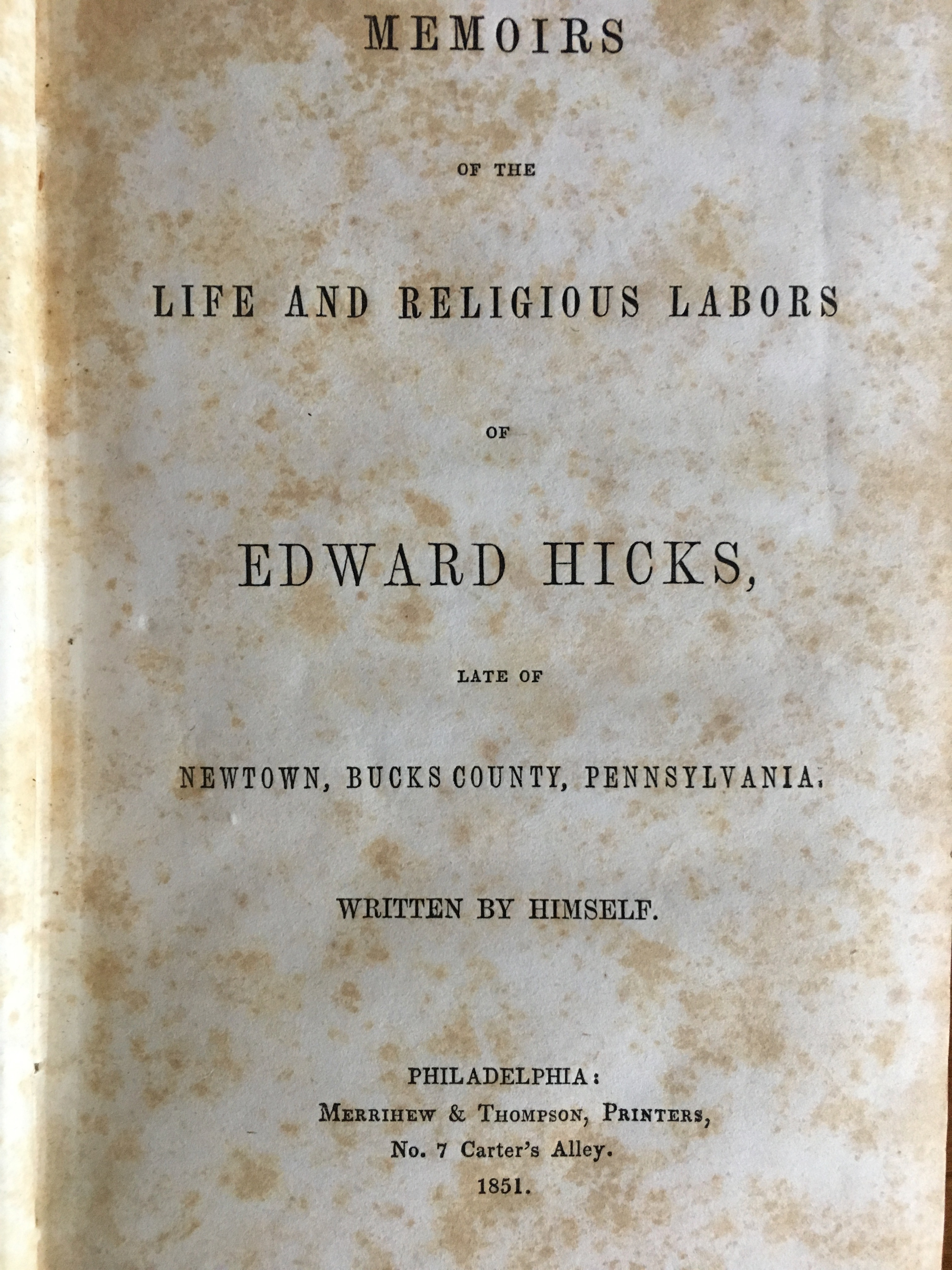
At the end of Hicks’ 365 page Memoirs autobiography and religious treatise, two Friends, Joseph and Sarah Flowers added a brief biography of Hicks’ life and emphasized the importance of his ministry. They called it A TESTIMONY Of Makefield Monthly Meeting, concerning our beloved Friend, EDWARD HICKS, deceased. “A Testimony” is revealing in how Edward Hicks was viewed by his fellow Quaker friends.
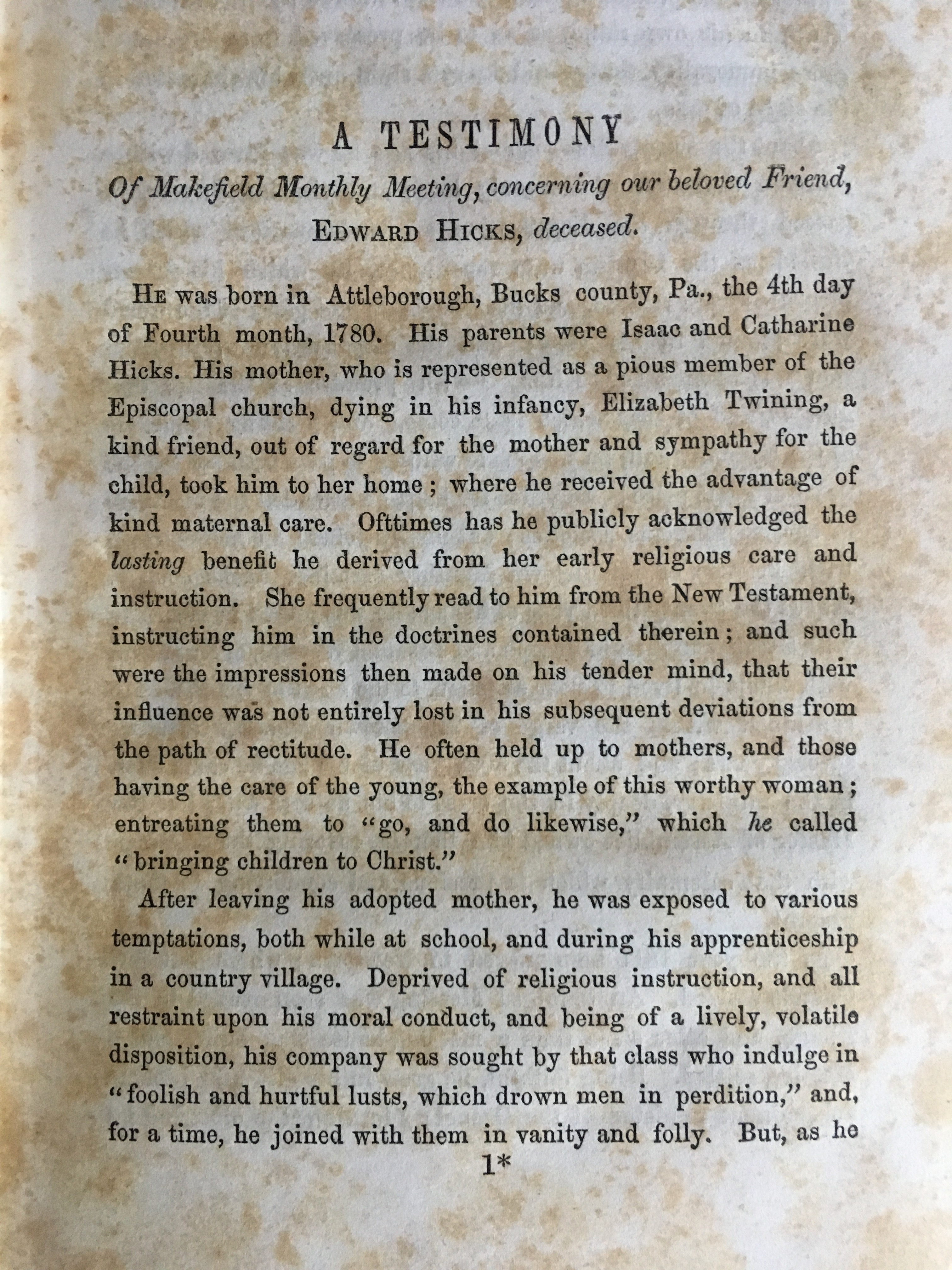


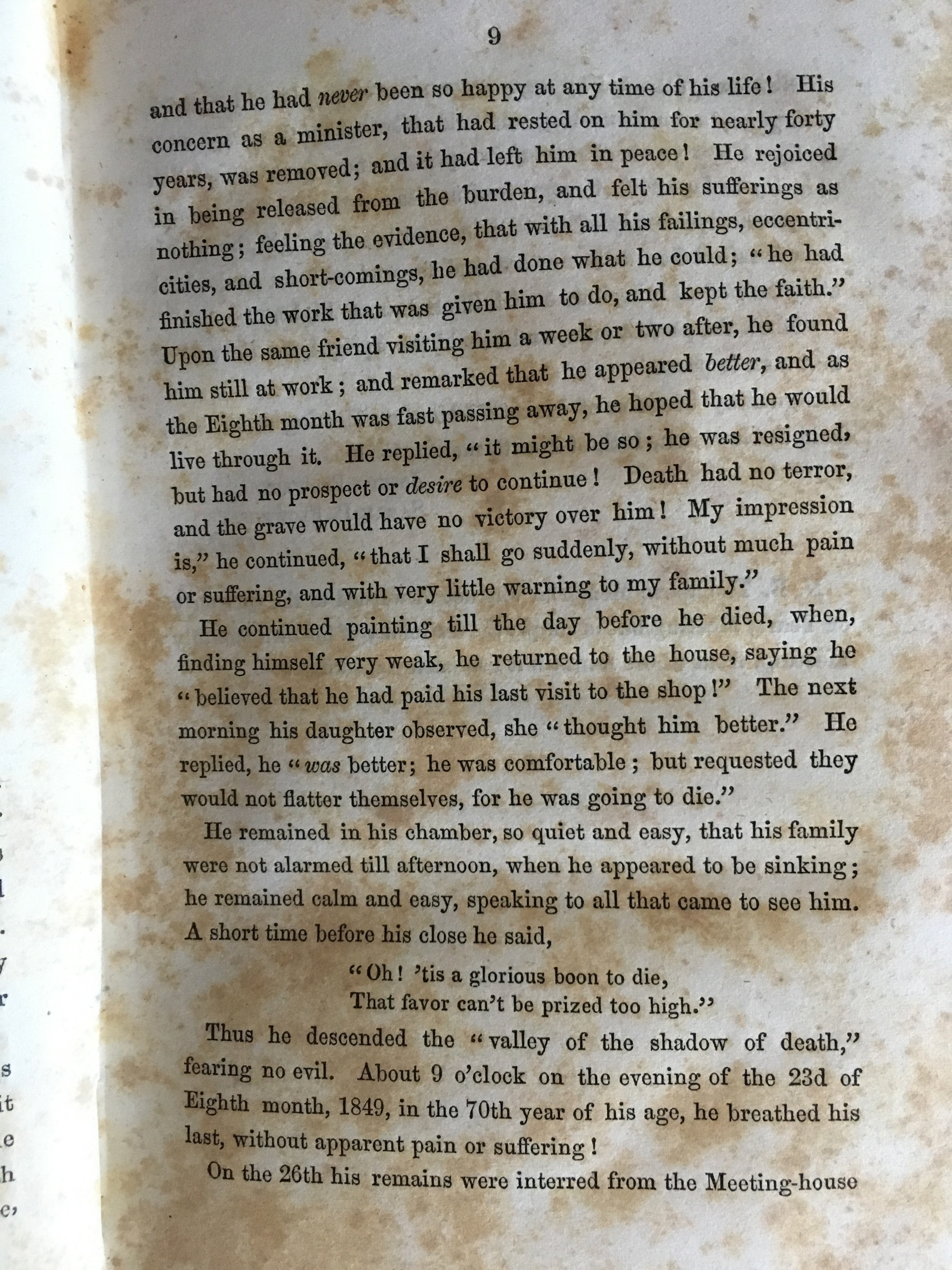

Hicks included a long section in his Memoirs of the talk he gave February 21, 1837 while visiting Goose Creek Meeting, Loudoun County, Virginia. That talk gave many insights into Hicks’ thinking and motivation behind his Peaceable Kingdom paintings.It is the only recorded time the painter explained his religious philosophy for creating these iconic paintings, some of the most famous art works in American history.

An in depth analysis of Hicks and his artistic motives and ministry is found in Edward Hicks: Painter of the Peaceable Kingdom by Alice Ford (Philadelphia, 1952) as well as an article written by the same author in The Bulletin of Friends Historical Association, Vol. 50 Spring 1961 No. 1

0 comments on “Edward Hicks and his Peaceable Kingdom”